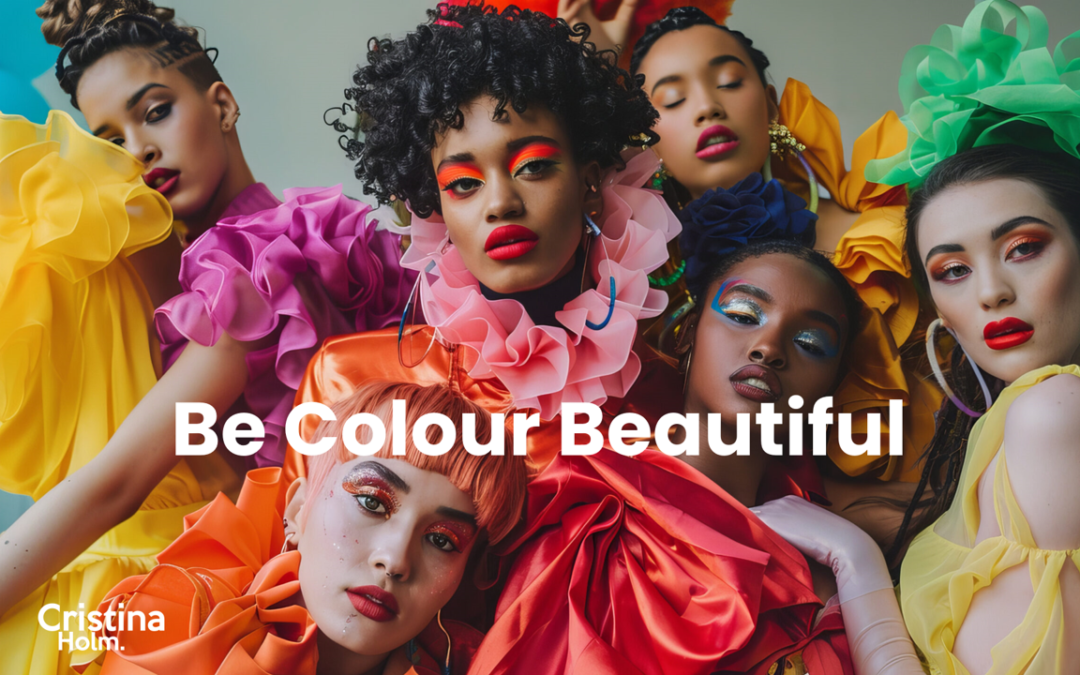The colours you wear can transform not only how you look… but how you feel emotionally
Plus, they can change how others perceive your personality
Colours are more than just a visual stimulus; they wield the power to influence emotions, behaviours, and perceptions.
The hues we choose to wear can affect our mood and shape how others perceive our personality.
Cristina Holm explores the psychological impact of clothing colours and examines whether the colours we wear truly alter our emotional state and the impression we leave on others.
![Wearing the right colours for you can transform not only how you look, but also how you feel.[100]](https://cristinaholm.com/wp-content/uploads/2023/11/Wearing-the-right-colours-for-you-can-transform-not-only-how-you-look-but-also-how-you-feel.100.jpeg)
Evoke colour emotions
Colours have been studied extensively in psychology for their ability to evoke specific emotional responses and influence behaviour. Here’s a brief overview of how different colours can impact mood:
Seasonal changes and specific contexts can influence how colours impact mood. For example, bright colours might feel more uplifting in summer, while darker shades can be more comforting in winter.
Personality traits can also determine colour preferences and how they affect you. For instance, extroverts may feel more energised by vibrant colours, while introverts might prefer calming, subdued hues. The effect is it can alter your mood. Just by the colour you’re wearing.
“Colours play a crucial role in first impressions.”
Colours play a crucial role in first impressions. People often make snap judgments about personality traits, simply based upon the colours someone is wearing.
So, worth considering if you are looking to make an impression. Especially the right kind.
In professional settings, certain colours can convey competence, reliability, and professionalism.
For example, navy blue and black are often associated with authority and trustworthiness, but I should add, perceptions of colours can vary significantly across cultures, so it’s more nuanced.
Understanding these differences is important if you have global interactions to avoid misinterpretation.
“The key lies in balancing colour psychology principles with your personal preferences.”
The psychology of colour
Red – is associated with energy, passion, and excitement. It can boost confidence and stimulate physical responses.
Blue – Evokes calmness, tranquillity, and trust. It is often linked to feelings of peace and relaxation.
Yellow – Represents happiness, optimism, and warmth. It can uplift mood and stimulate creativity.
Green – Symbolises nature, growth, and harmony. It is calming and can reduce stress.
Black -Conveys sophistication, power, and elegance. It can also evoke feelings of mystery or seriousness.
White – Represents purity, simplicity, and cleanliness. It can create a sense of space and freshness.
Purple – Often associated with luxury, creativity, and spirituality. It can inspire imagination and conversation.
Orange – Radiates enthusiasm, vitality, and excitement. It can energize and stimulate social interaction.
What do you see and feel?
There have been scientific studies that support the link between clothing colour, mood, and perception. For example, research has shown that wearing red can increase feelings of attractiveness and dominance.
You may recognise this when you get dressed in the morning. Have you ever put on a garment and thought it was either too bright or too dark for your mood that day?
By choosing colours of clothes to wear that evoke the impression we want to give, or how we want to express how we feel, can have more of an impact than we might believe.
Don’t take my word for it… try wearing yellow on a gloomy day and see how it makes you feel and how others react?

What do you prefer?
While colour psychology provides general guidelines, individual preferences and comfort should always take precedence.
By example, I am not suggesting if you are naturally introverted that you should force yourself to wear yellow. However by understanding the power of your colour choices you can use it as a tool to benefit you.
As and when you want, but to make a more informed choice that might enhance your emotional well-being and create desired impressions for that day.
Ultimately, the key lies in balancing colour psychology principles with personal preferences to craft a wardrobe that reflects our true selves and boosts our confidence.
This is because ‘how it makes you feel’ is what matters most.
If you’re now intrigued, you should read my ‘DIY’ guide to colour analysis blog. As not all colour tones will suit your individual skin tone.
Here’s the thing though, by wearing your best tones, you will always look healthy (even if you don’t feel it) which trust me, is really great for your mood:



